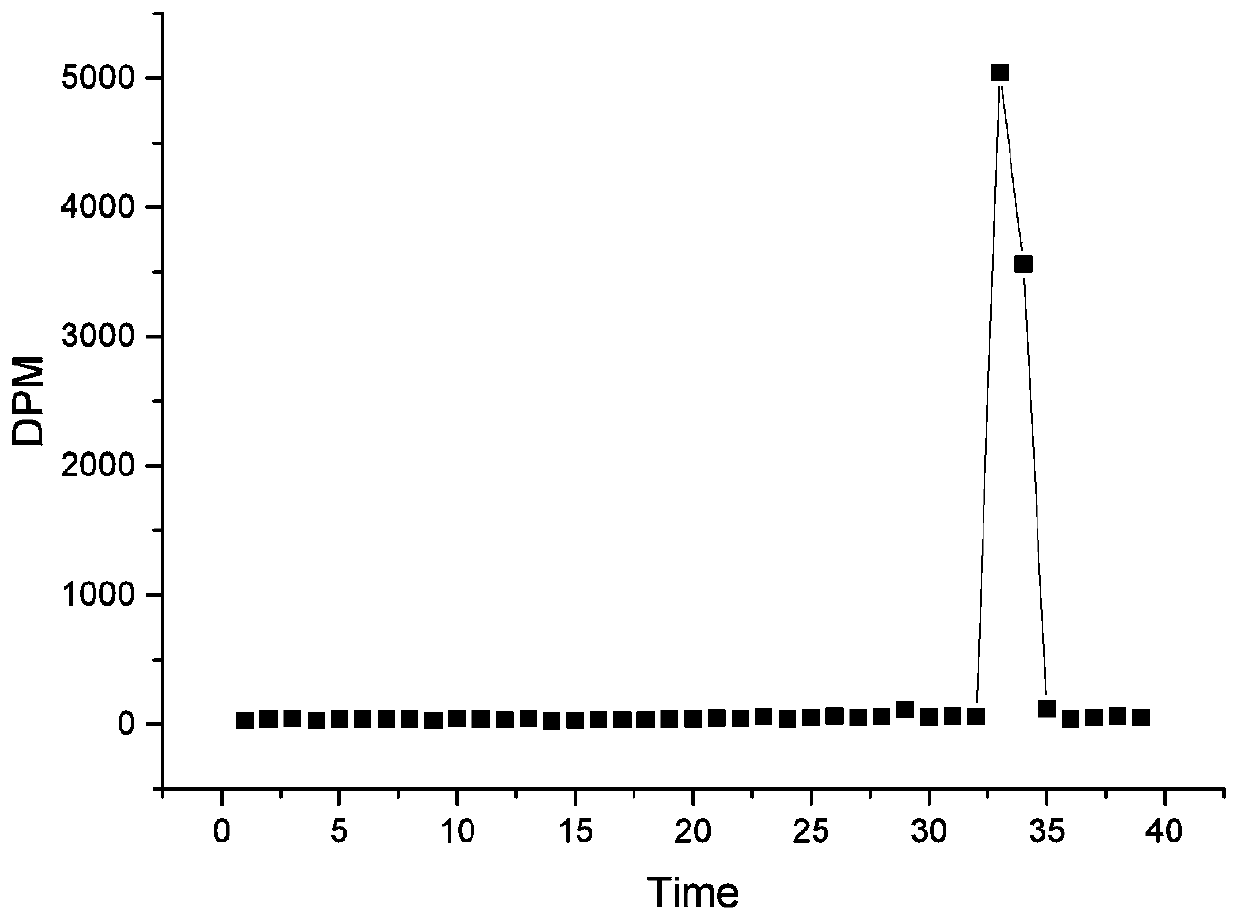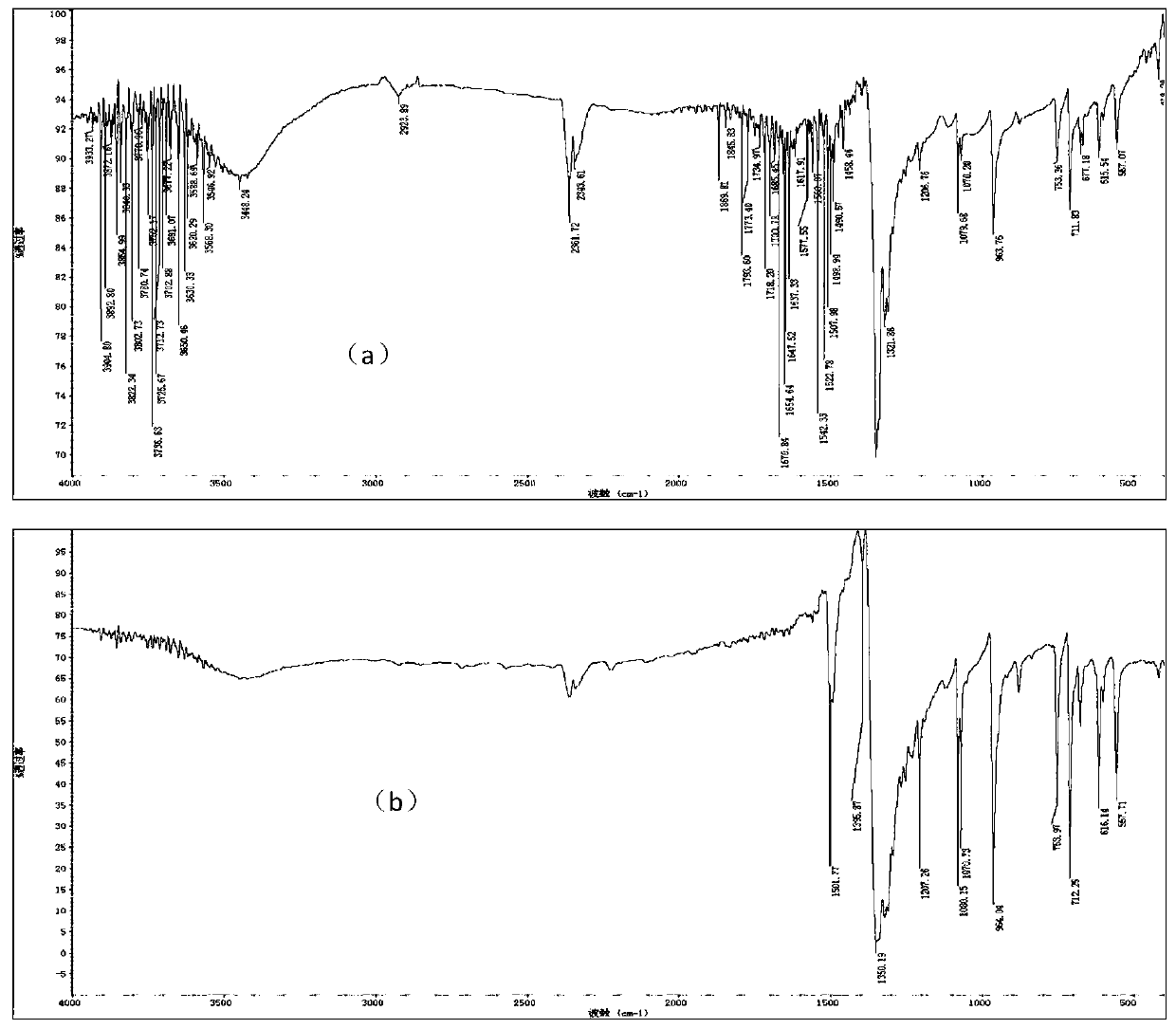Radioactive carbon-12 labeled decabromodiphenyl ether and synthetic method thereof
A decabromodiphenyl ether and radiocarbon technology, applied in chemical instruments and methods, preparation of organic compounds, organic chemistry, etc., can solve incomplete and true reflection of environmental behavior and fate, environmental hazards of decabromodiphenyl ether , Biosafety deviation, BR content not considered, etc.
- Summary
- Abstract
- Description
- Claims
- Application Information
AI Technical Summary
Problems solved by technology
Method used
Image
Examples
Embodiment 1
[0032] A synthetic method of radioactive carbon-14 labeled decabromodiphenyl ether, comprising the following steps:
[0033] 1. Dry the Hiddink tube in an oven, and add 17.37mmol of anhydrous cesium carbonate, 1.03mmol of cuprous bromide, 9.73mmol of ethyl 2-cyclohexanone carboxylate and a magnetic stirring rotor to it;
[0034] 2. Vacuum the Hiddink tube and add 4mL of anhydrous dimethyl sulfoxide under a stable argon flow, then stir at room temperature for 30min;
[0035] 3. Weigh 8.32 mmol of iodobenzene and 7.951 mmol of carbon-14 labeled phenol, dissolve them in 4 mL of anhydrous dimethyl sulfoxide, and slowly inject them into the Hiddink tube in step 2 under the protection of argon , then the temperature was raised to 70°C under the protection of argon, and stirred for 24 hours;
[0036] 4. After the reaction is completed, filter the product on diatomaceous earth to remove cuprous bromide, and repeatedly rinse the diatomite with 400 mL of ethyl acetate, combine the orga...
Embodiment 2
[0042] A synthetic method of radioactive carbon-14 labeled decabromodiphenyl ether, comprising the following steps:
[0043] 1. The Hiddink tube is dried in an oven, and anhydrous cesium carbonate 17.5mmol, cuprous bromide 1.03mmol, 2-cyclohexanone ethyl formate 9.8mmol and a magnetic stirring rotor are added successively thereto;
[0044] 2. Vacuum the Hiddink tube and add 4mL of anhydrous dimethyl sulfoxide under a stable argon flow, then stir at room temperature for 30min;
[0045] 3. Weigh 8.32 mmol of iodobenzene and 7.951 mmol of carbon-14 labeled phenol, dissolve them in 4 mL of anhydrous dimethyl sulfoxide, and slowly inject them into the Hiddink tube in step 2 under the protection of argon , then the temperature was raised to 70°C under the protection of argon, and stirred for 24 hours;
[0046] 4. After the reaction is completed, filter the product on diatomaceous earth to remove cuprous bromide, and repeatedly rinse the diatomite with 400 mL of ethyl acetate, combi...
PUM
 Login to View More
Login to View More Abstract
Description
Claims
Application Information
 Login to View More
Login to View More - R&D
- Intellectual Property
- Life Sciences
- Materials
- Tech Scout
- Unparalleled Data Quality
- Higher Quality Content
- 60% Fewer Hallucinations
Browse by: Latest US Patents, China's latest patents, Technical Efficacy Thesaurus, Application Domain, Technology Topic, Popular Technical Reports.
© 2025 PatSnap. All rights reserved.Legal|Privacy policy|Modern Slavery Act Transparency Statement|Sitemap|About US| Contact US: help@patsnap.com



